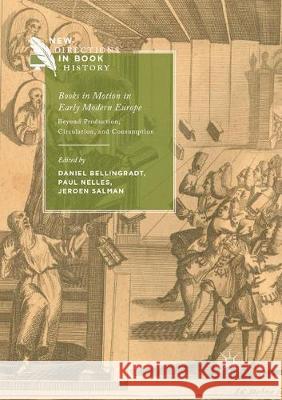Books in Motion in Early Modern Europe: Beyond Production, Circulation and Consumption » książka
topmenu
Books in Motion in Early Modern Europe: Beyond Production, Circulation and Consumption
ISBN-13: 9783319851358 / Angielski / Miękka / 2018 / 305 str.
Books in Motion in Early Modern Europe: Beyond Production, Circulation and Consumption
ISBN-13: 9783319851358 / Angielski / Miękka / 2018 / 305 str.
cena 564,88 zł
(netto: 537,98 VAT: 5%)
Najniższa cena z 30 dni: 501,19 zł
(netto: 537,98 VAT: 5%)
Najniższa cena z 30 dni: 501,19 zł
Termin realizacji zamówienia:
ok. 22 dni roboczych
Bez gwarancji dostawy przed świętami
ok. 22 dni roboczych
Bez gwarancji dostawy przed świętami
Darmowa dostawa!
Kategorie:
Kategorie BISAC:
Wydawca:
Palgrave MacMillan
Seria wydawnicza:
Język:
Angielski
ISBN-13:
9783319851358
Rok wydania:
2018
Wydanie:
Softcover Repri
Ilość stron:
305
Oprawa:
Miękka
Wolumenów:
01











